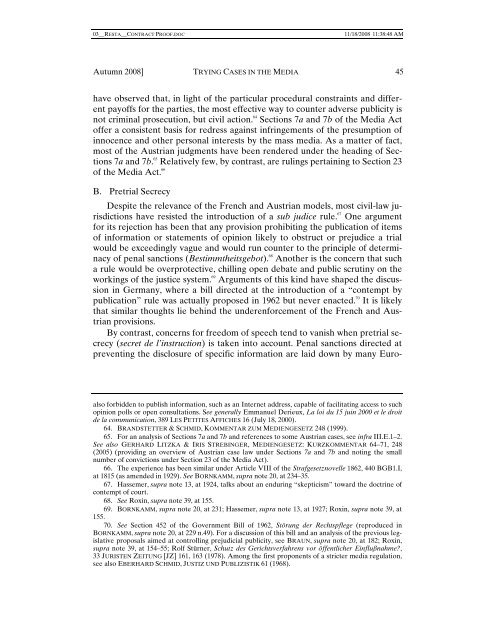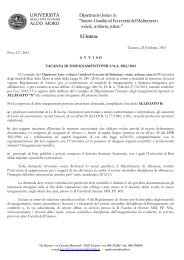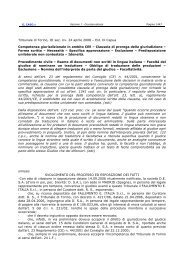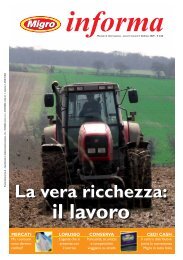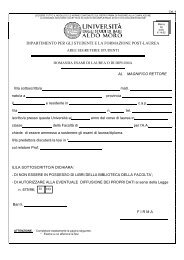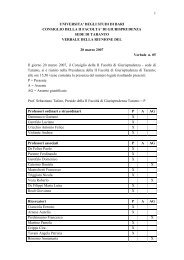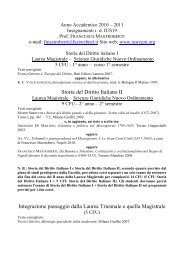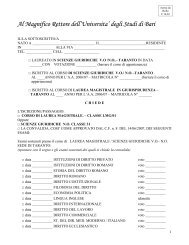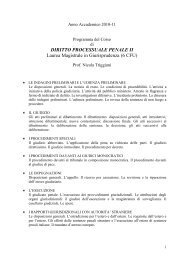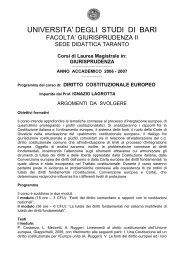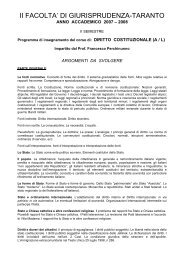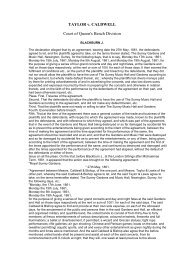TRYING CASES IN THE MEDIA: A COMPARATIVE OVERVIEW
TRYING CASES IN THE MEDIA: A COMPARATIVE OVERVIEW
TRYING CASES IN THE MEDIA: A COMPARATIVE OVERVIEW
Create successful ePaper yourself
Turn your PDF publications into a flip-book with our unique Google optimized e-Paper software.
03__RESTA__CONTRACT PROOF.DOC11/18/2008 11:38:48 AMAutumn 2008] <strong>TRY<strong>IN</strong>G</strong> <strong>CASES</strong> <strong>IN</strong> <strong>THE</strong> <strong>MEDIA</strong> 45have observed that, in light of the particular procedural constraints and differentpayoffs for the parties, the most effective way to counter adverse publicity isnot criminal prosecution, but civil action. 64 Sections 7a and 7b of the Media Actoffer a consistent basis for redress against infringements of the presumption ofinnocence and other personal interests by the mass media. As a matter of fact,most of the Austrian judgments have been rendered under the heading of Sections7a and 7b. 65 Relatively few, by contrast, are rulings pertaining to Section 23of the Media Act. 66B. Pretrial SecrecyDespite the relevance of the French and Austrian models, most civil-law jurisdictionshave resisted the introduction of a sub judice rule. 67One argumentfor its rejection has been that any provision prohibiting the publication of itemsof information or statements of opinion likely to obstruct or prejudice a trialwould be exceedingly vague and would run counter to the principle of determinacyof penal sanctions (Bestimmtheitsgebot). 68 Another is the concern that sucha rule would be overprotective, chilling open debate and public scrutiny on theworkings of the justice system. 69 Arguments of this kind have shaped the discussionin Germany, where a bill directed at the introduction of a “contempt bypublication” rule was actually proposed in 1962 but never enacted. 70 It is likelythat similar thoughts lie behind the underenforcement of the French and Austrianprovisions.By contrast, concerns for freedom of speech tend to vanish when pretrial secrecy(secret de l’instruction) is taken into account. Penal sanctions directed atpreventing the disclosure of specific information are laid down by many Euroalsoforbidden to publish information, such as an Internet address, capable of facilitating access to suchopinion polls or open consultations. See generally Emmanuel Derieux, La loi du 15 juin 2000 et le droitde la communication, 389 LES PETITES AFFICHES 16 (July 18, 2000).64. BRANDSTETTER & SCHMID, KOMMENTAR ZUM MEDIENGESETZ 248 (1999).65. For an analysis of Sections 7a and 7b and references to some Austrian cases, see infra III.E.1–2.See also GERHARD LITZKA & IRIS STREB<strong>IN</strong>GER, MEDIENGESETZ: KURZKOMMENTAR 64–71, 248(2005) (providing an overview of Austrian case law under Sections 7a and 7b and noting the smallnumber of convictions under Section 23 of the Media Act).66. The experience has been similar under Article VIII of the Strafgesetznovelle 1862, 440 BGB1.I,at 1815 (as amended in 1929). See BORNKAMM, supra note 20, at 234–35.67. Hassemer, supra note 13, at 1924, talks about an enduring “skepticism” toward the doctrine ofcontempt of court.68. See Roxin, supra note 39, at 155.69. BORNKAMM, supra note 20, at 231; Hassemer, supra note 13, at 1927; Roxin, supra note 39, at155.70. See Section 452 of the Government Bill of 1962, Störung der Rechtspflege (reproduced inBORNKAMM, supra note 20, at 229 n.49). For a discussion of this bill and an analysis of the previous legislativeproposals aimed at controlling prejudicial publicity, see BRAUN, supra note 20, at 182; Roxin,supra note 39, at 154–55; Rolf Stürner, Schutz des Gerichtsverfahrens vor öffentlicher Einflußnahme?,33 JURISTEN ZEITUNG [JZ] 161, 163 (1978). Among the first proponents of a stricter media regulation,see also EBERHARD SCHMID, JUSTIZ UND PUBLIZISTIK 61 (1968).


